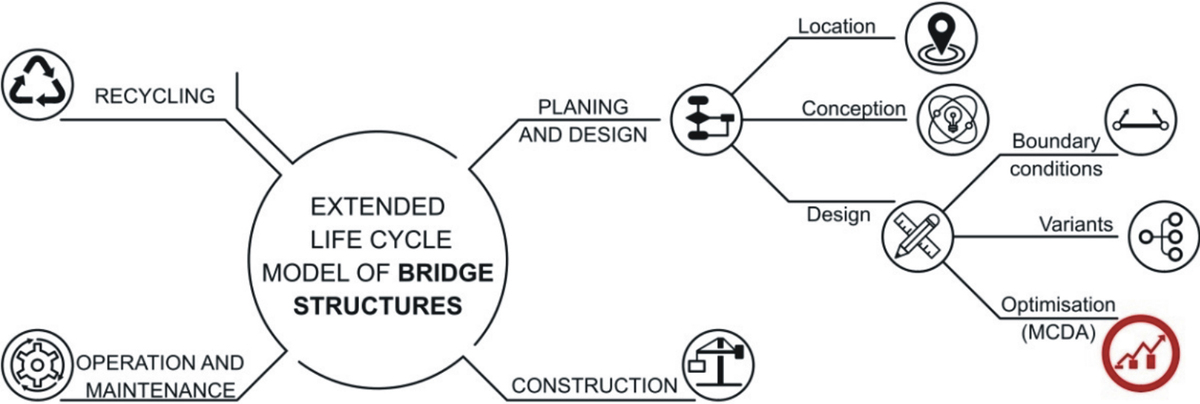Analysis of bridge structure selection using a hybrid decision-making technique
1
Faculty of Civil Engineering and Architecture, Opole University of Technology, Poland
These authors had equal contribution to this work
Submission date: 2023-09-08
Final revision date: 2024-01-29
Acceptance date: 2024-02-27
Publication date: 2024-10-01
Corresponding author
Przemysław Jakiel
Faculty of Civil Engineering and Architecture, Opole University of Technology, Katowicka, 45-061, Opole, Poland
Faculty of Civil Engineering and Architecture, Opole University of Technology, Katowicka, 45-061, Opole, Poland
Archives of Civil Engineering 2024;70(3):579-593
KEYWORDS
TOPICS
ABSTRACT
Implementation of sustainability principles in civil engineering has increased the substantive range of bridge engineering. The consideration of additional criteria, in particular ecological and social ones, requires the design process to be supported by appropriate tools. It refers especially to large bridge elements which affect their load-bearing capacity, e.g. girders or decks. The aim of this paper is to develop an original MCDA (Multi-Criteria Decision Analysis) method as a potential tool to support a decision-making process in the selection of material and design alternatives for bridge main girders. Therefore, an advanced hybrid algorithm was created consisting of the following methods: EA FAHP+FDEMATEL+ZUM (Extent Analysis Fuzzy Analytic Hierarchy Process + Fuzzy Decision-Making Trial and Evaluation Laboratory+ Zero Unitarization Method), applied at the structure design stage. The pre-dimensioned alternatives selected for analysis were then subjected to an evaluation process based on a complex set of criteria arranged in a hierarchical control structure (HCS). The algorithm has been applied based on the example of a medium span slab-and-girder bridge, assuming 6 alternative concepts of girders, different in material and dimensions. Obtained results have been compared to the EA FAHP method. Analysis results obtained based on judgments from 3 teams of Decision Makers (DM) indicate effectiveness of the proposed algorithm and its practical aspect, which may contribute to improved quality and safety of bridge structures.
We process personal data collected when visiting the website. The function of obtaining information about users and their behavior is carried out by voluntarily entered information in forms and saving cookies in end devices. Data, including cookies, are used to provide services, improve the user experience and to analyze the traffic in accordance with the Privacy policy. Data are also collected and processed by Google Analytics tool (more).
You can change cookies settings in your browser. Restricted use of cookies in the browser configuration may affect some functionalities of the website.
You can change cookies settings in your browser. Restricted use of cookies in the browser configuration may affect some functionalities of the website.




